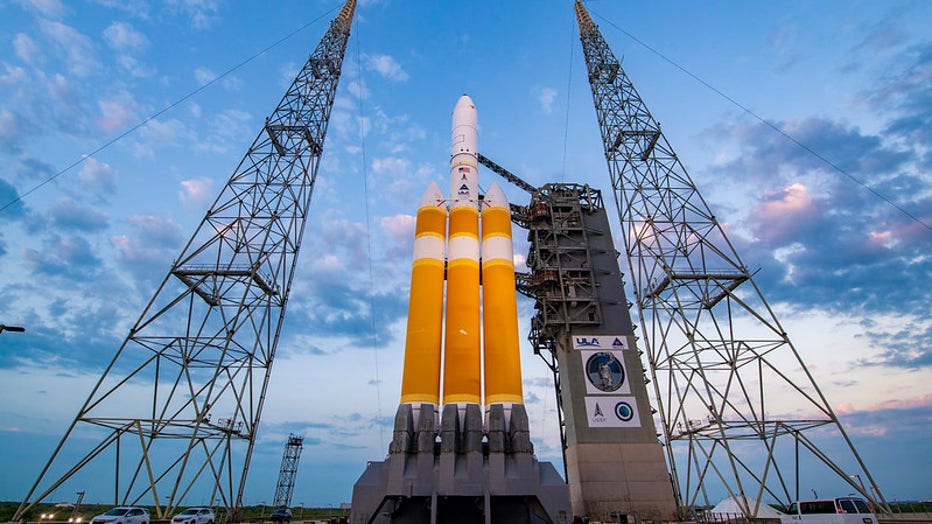Delta IV Heavy rocket launch scrubbed as team works to set new date
CAPE CANAVERAL, Fla. - The ULA Delta IV Heavy rocket has been scrubbed as the team works to determine the cause of Thursday's failure.
The rocket was set to be launched at 2:45 p.m. on Thursday from Space Launch Complex-37 at Cape Canaveral Space Force Station as part of the NROL-70 mission for the National Reconnaissance Office (NRO).
The launch was moved to Friday afternoon at 1:37 p.m. after the rocket had an issue with the gaseous nitrogen pipeline which provides pneumatic pressure to the launch vehicle systems, but that launch date has also been canceled.
This marks the 16th launch of a Delta IV Heavy Rocket, which had its first launch in 1960.
What is the NROL-70 mission?
The NRO develops and operates the world's most capable and innovative overhead reconnaissance systems to collect intelligence for U.S. national security, and to support disaster relief and humanitarian efforts.
The mission will strengthen the NRO's ability to provide a wide range of timely intelligence information to national decision-makers, warfighters, and intelligence analysts to protect the nation’s vital interests and support humanitarian efforts worldwide.

Delta IV Heavy Rocket launches from Cape Canaveral Space Launch Complex
What is the history of the Delta IV Heavy Rocket?
In the mid-1950s, the development of the Thor rocket began in response to a growing fear that the former Soviet Union would beat the U.S. in the completion of a long-range ballistic missile.
After several failed attempts, Thor successfully launched from a newly constructed Space Launch Complex at Cape Canaveral on September 20, 1957.
A partnership began between NASA and Thor, which eventually led to the creation of the Delta One rocket that lifted off on May 13, 1960. This first was also not successful.
The Delta team quickly pinpointed a failure, and three months later, a successful rocket launch ensued, with 22 additional successful launches.
The historic Delta rockets launched the world's first weather rockets and AT&T Telstar 1.
In the 1970s, the Delta rocket launched several satellites into orbit for multiple countries worldwide.
In the 1980s, production of the Delta Rocket abruptly ended when national space policy dictated that the space shuttle be used as the U.S.'s primary launcher.
In 1987, the Delta team began developing again, creating Delta 2 in just two years.
Delta 2 had a 20-year run, bringing satellite telephone communication worldwide. To meet the rising needs of this newfound technology, the Delta team went to work yet again building Delta 3 - a stronger rocket.
The Delta IV rocket was created in the mid-90s. The Delta IV Heavy, with three common booster cores, delivers some of the U.S.'s largest missions into orbit.

